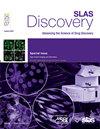创建高通量筛选兼容的体外成骨模型时的设计考虑因素
IF 2.7
4区 生物学
Q2 BIOCHEMICAL RESEARCH METHODS
引用次数: 0
摘要
体外诱导成骨分化有助于确定和开发骨再生疗法以及骨疾病模型。将体外模型与高通量筛选技术相结合,既能保持试验在研究中的相关性,又能提高其治疗效果。体外检测的微型化、自动化和/或数字化将减少所需的细胞、生物刺激剂、培养/输出检测试剂的数量、时间和成本。本综述重点介绍了创建高通量筛选兼容成骨模型的设计和工作流程注意事项,比较和对比了成骨细胞类型、化验制造和培养方法、成骨诱导方法和现有输出技术的再利用。本文章由计算机程序翻译,如有差异,请以英文原文为准。
Design considerations when creating a high throughput screen-compatible in vitro model of osteogenesis
Inducing osteogenic differentiation in vitro is useful for the identification and development of bone regeneration therapies as well as modelling bone disorders. To couple in vitro models with high throughput screening techniques retains the assay's relevance in research while increasing its therapeutic impact. Miniaturizing, automating and/or digitalizing in vitro assays will reduce the required quantity of cells, biologic stimulants, culture/output assay reagents, time and cost. This review highlights the design and workflow considerations for creating a high throughput screen-compatible model of osteogenesis, comparing and contrasting osteogenic cell type, assay fabrication and culture methodology, osteogenic induction approach and repurposing existing output techniques.
求助全文
通过发布文献求助,成功后即可免费获取论文全文。
去求助
来源期刊

SLAS Discovery
Chemistry-Analytical Chemistry
CiteScore
7.00
自引率
3.20%
发文量
58
审稿时长
39 days
期刊介绍:
Advancing Life Sciences R&D: SLAS Discovery reports how scientists develop and utilize novel technologies and/or approaches to provide and characterize chemical and biological tools to understand and treat human disease.
SLAS Discovery is a peer-reviewed journal that publishes scientific reports that enable and improve target validation, evaluate current drug discovery technologies, provide novel research tools, and incorporate research approaches that enhance depth of knowledge and drug discovery success.
SLAS Discovery emphasizes scientific and technical advances in target identification/validation (including chemical probes, RNA silencing, gene editing technologies); biomarker discovery; assay development; virtual, medium- or high-throughput screening (biochemical and biological, biophysical, phenotypic, toxicological, ADME); lead generation/optimization; chemical biology; and informatics (data analysis, image analysis, statistics, bio- and chemo-informatics). Review articles on target biology, new paradigms in drug discovery and advances in drug discovery technologies.
SLAS Discovery is of particular interest to those involved in analytical chemistry, applied microbiology, automation, biochemistry, bioengineering, biomedical optics, biotechnology, bioinformatics, cell biology, DNA science and technology, genetics, information technology, medicinal chemistry, molecular biology, natural products chemistry, organic chemistry, pharmacology, spectroscopy, and toxicology.
SLAS Discovery is a member of the Committee on Publication Ethics (COPE) and was published previously (1996-2016) as the Journal of Biomolecular Screening (JBS).
 求助内容:
求助内容: 应助结果提醒方式:
应助结果提醒方式:


